
Welcome to our highlights from Science at the Shine Dome 2024.
The event is a hybrid format, so audiences were able to join us in person in Canberra or from anywhere in the world, online.
Science at the Shine Dome is the Academy’s flagship event. Over four days, Australia’s most influential scientists gather at the Shine Dome in Canberra to celebrate and honour outstanding achievements in science.
It enables researchers from all disciplines and career levels to come together to present, share, network and collaborate.
We are grateful to our generous event partners, who made this event possible.
This year, Fellows elected in 2023 and 2024 and award recipients from 2023 and 2024 were all recognised across the event.
The event also celebrates the Academy’s 70th anniversary. Find out about our event artwork.
On Thursday, attendees were still buzzing after the activities at the Gala Dinner the night before.
What a wonderful evening at @Science_Academy gala dinner as a part of #ShineDome24 with Her excellency @gg_australia , minister Husic , president of The Academy! pic.twitter.com/yS7HvKwH2A
— Prof Brajesh Singh (@Prof_Braj_Singh) September 11, 2024
The final day of Science at the Shine Dome 2024 began bright and early with a breakfast for awardees, supporters and donors in a marquee outside Ian Potter House.
Stephanie Beaupark of the University of Wollongong and Michelle Hobbs of Griffith University were awarded the 2023 Aboriginal and Torres Strait Islander Scientist Award.
Dr Patrick Finnerty of University of Sydney and Mr Shawn Scott of the University of South Australia were awarded the 2023 Max Day Environmental Science Fellowship Award.
Dr Justine Clark of the Telethon Kids Institute and Dr Joe Greet of the University of Melbourne were awarded the 2024 Aboriginal and Torres Strait Islander Scientist Award.
Aviya Naccarella of Deakin University and Dr Elvis Okoffo of the University of Queensland were awarded the 2024 Max Day Environmental Science Fellowship Award.
Christopher Keneally of the University of Adelaide and Dr Jiaying Li of the University of Sydney were highly commended.
Read more about the Academy’s awards and opportunities.
Over at the Shine Dome, the theme of awardees continued, with Professor Lidia Morawska FAA presenting the 2023 Matthew Flinders Lecture on her research in indoor air quality.
Professor Morawska related the story of how at the beginning of the Covid-19 pandemic, authorities were buying—en masse—purifiers and delivering them to schools.
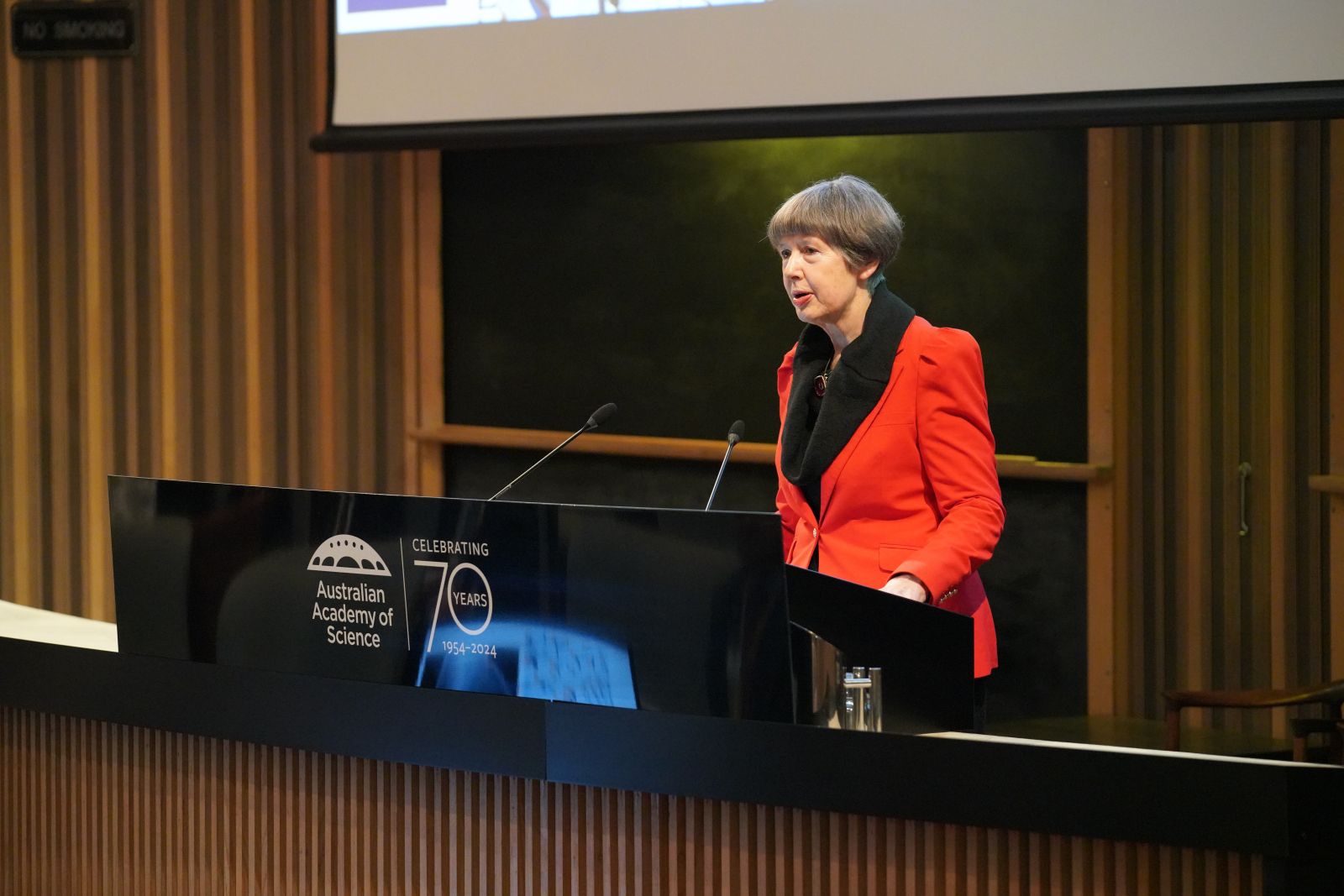
“I said, ‘They will become electronic junk.’ Because schoolteachers, principals, they didn’t know what to do with them. And that came to be,” Professor Morawska said.
“Yes, they are effective but still, some knowledge of how to use it, and some autonomous operating, is necessary.”
Professor Jenny Graves AC FAA then delivered the 2023 Ruby Payne-Scott Lecture, observing that alligators are the “pin-ups” of environmental sex determination.
“When it’s hot, the eggs all hatch as males; when it’s cold, they all hatch as females. Same eggs but a different trigger pointing them down a different pathway,” she said.
Awardees then had the opportunity to have professional portraits and group photos taken.
Next, Professor Di Yu FAHMS, recipient of the 2023 Jaques Miller Medal, described his research into the essential assistance that T cells provide other immune cells.

This was followed by further award and medal presentations:
After a break for lunch and more opportunities for professional photos and networking, Professor David Lindenmayer AO FAA gave the 2024 Macfarlane Burnet Lecture, on feedbacks and disturbance-stimulated flammability in forests.
“There’s no doubt that long-term climate and short-term weather are key drivers of fire.”
Professor Lindenmayer said during his lecture.
This was followed by the 2024 Ruby Payne-Scott Lecture, on Bayesian statistical science in the 2020s, presented by Professor Kerrie Mengersen FAA FASSA, who claimed that "The 2020s is an amazing time to be a statistician."
The following 2024 awardees then had 10 minutes to give presentations on their research, followed by an opportunity for Q&A with the audience:
This was followed by medal presentations:
Academy Chief Executive Anna-Maria Arabia, and Academy President Professor Jagadish delivered closing remarks, thanking the event partners, the Academy Executive Committee and Council, as well as the Secretariat for their work in bringing Science at the Shine Dome together.
Wednesday morning’s activities were kick-started with the Platinum Event Partner Address by Academy Fellow Professor Tanya Monro AC FAA FTSE of the Department of Defence.
Professor Monro highlighted the role science can play as a deterrent to conflict.
“Through science we can make sure that our smaller nation, with vast territories to protect, can keep this region peaceful and keep our men and women out of conflict,” she said.
The Fellows elected in 2024 then began their presentations, beginning with Professor Nerilie Abram FAA.
She described how her research uses the natural archives preserved in the Earth—from layers of ancient snowfall in Antarctica to the growth of coral skeletons in tropical waters.
Bringing this information from around the world together to build open access databases, they gain a unique perspective on the recent human-caused climate warming.
For example, when looking at 2019, Australia’s hottest and driest year on record, the positive Indian Ocean Dipole event was the strongest in our observational record—but our records are short, she noted.
That year was also the last of a three-year Tinderbox Drought, which was unforeseeable based purely on the observational record.
“We can use climate model simulations of the last millennium to go even further back in time and to have multiple realisations of climate variability. When we do that, what we find is that even without human-caused climate change, it’s possible in Australia to have droughts that don’t break for more than 20 years,” Professor Abram said.
“That’s something quite unimaginable compared to the droughts that we’ve lived through since the 1900s, and adds a sense of urgency to how we prepare Australia for extremes like this, particularly in a changing climate.”
Professor Andrew Blakers FAA FTSE then spoke about the exponential growth of solar, and his hopes for the role renewables will have in the future.
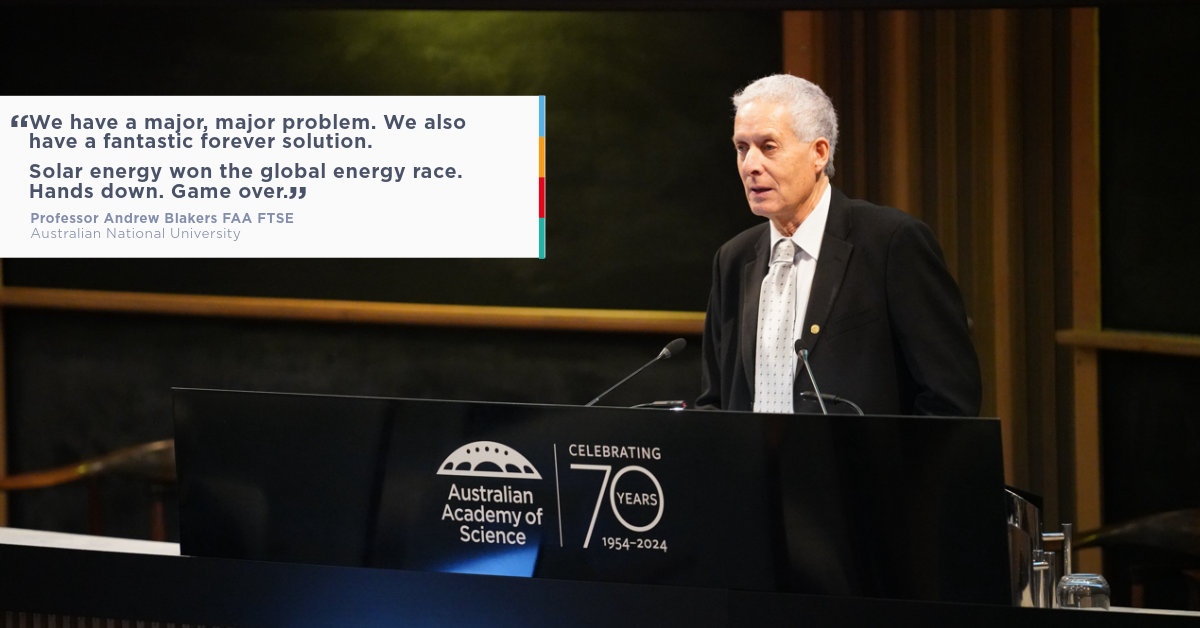
He was followed by Professor Rachelle Buchbinder AO FAA FAHMS who shared her landmark investigations into the efficacy (and sometimes, harms) of various interventions for musculoskeletal problems and chronic pain management.
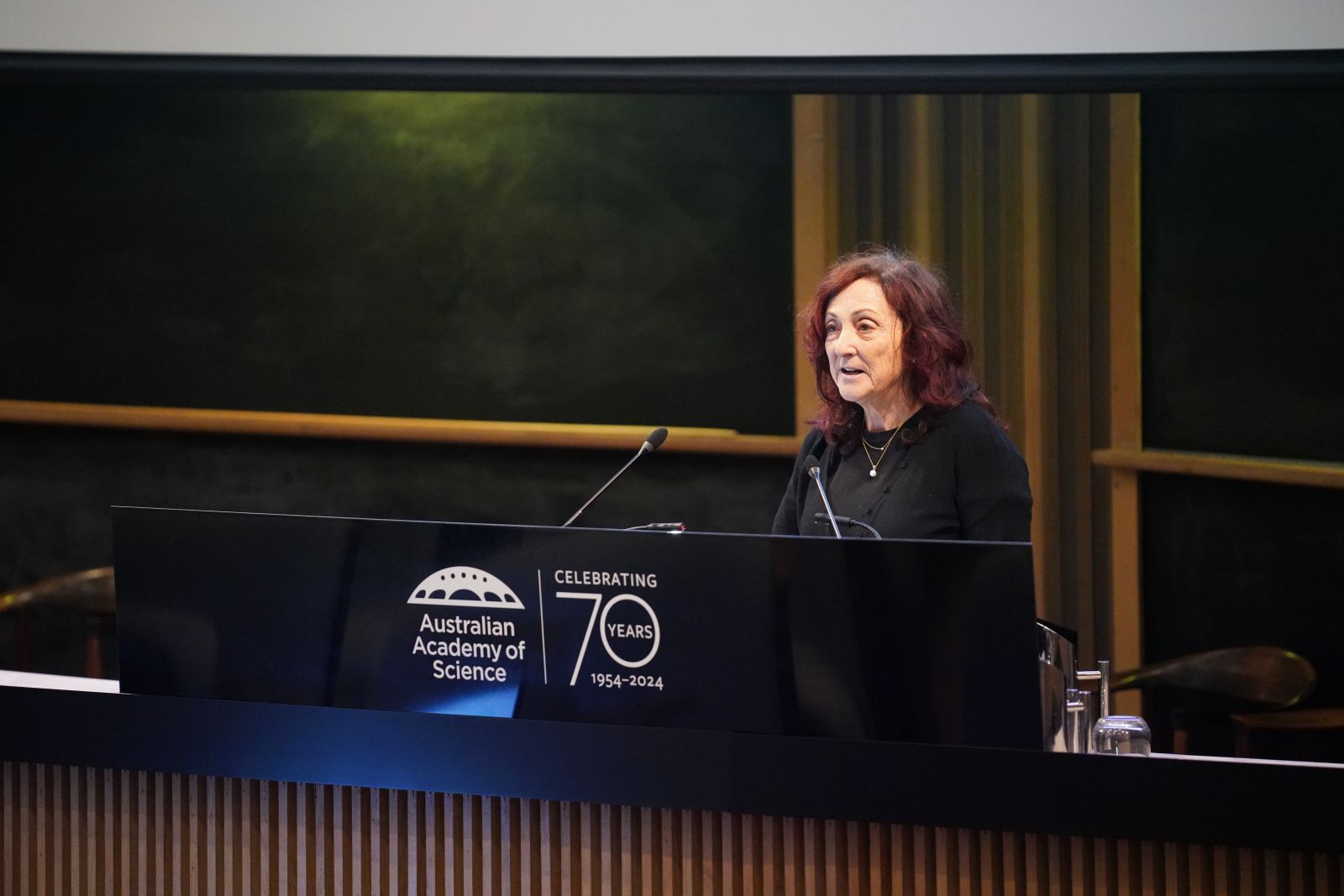
Professor Kylie Catchpole FAA FTSE shared how she teaches students to use their strengths and interests when it comes to action on climate change, noting, “Optimism is justified. Optimism is also generative.”
Professor Mary Garson AM FAA, a medicinal chemist who dove into marine science, described her work as “really about doing a molecular jigsaw puzzle ... identifying fragments by nuclear magnetic resonance and then joining them together.”
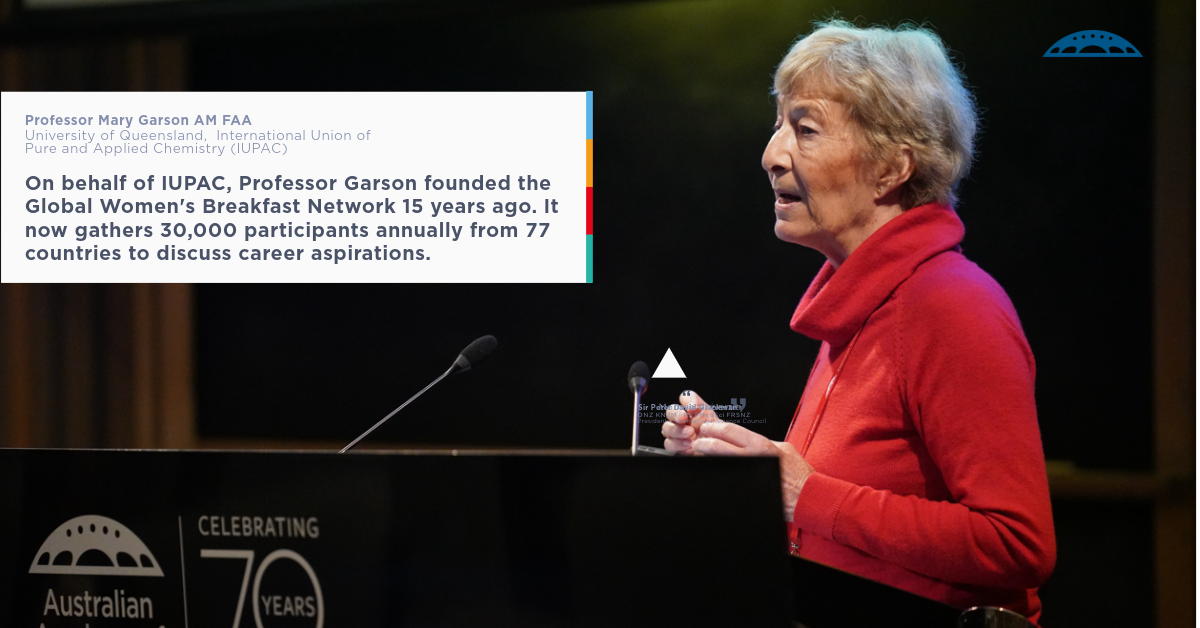
Next, Professor Arthur Georges FAA described his journey of discovery into the impact of environment on biological sex in reptiles.
Professor Ros Gleadow FAA then described how she first saw the Shine Dome, which they referred to as ‘the Martian Embassy’, in 1961 on a family holiday, and “never thought I would stand here”.
As for the work that led to this moment, she said, “I work on plants that poison you ... My interest has been working out why plants make these compounds, how they’ve evolved, and why there are more of them in crop plants.”
After morning tea, Professor Dmitri Golberg FAA explained how he developed novel imaging techniques to explore nanomaterials’ electromechanical, thermal, and opto-electronic properties in real time.
Along the way, his team created the smallest thermometer, and smallest carbon nanotube transistor, in the world.
“We got [a] Guiness World Record book signed saying that this [carbon nanotube thermometer] is the smallest thermometer in the world, it’s not very scientific but I think it was very impressive and encouraging for media for example,” he said.
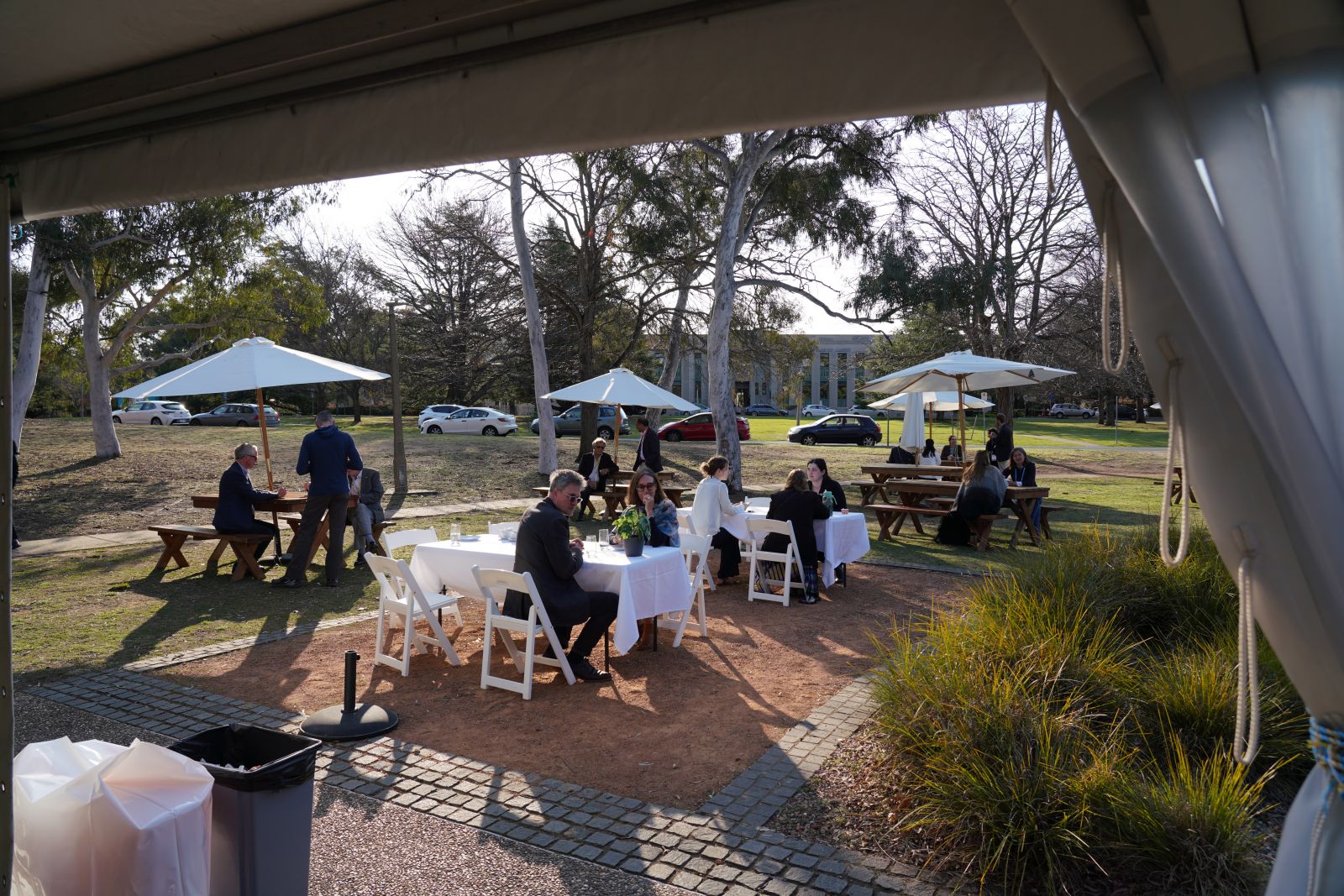
Similar to Professor Garson earlier that morning, the next speaker, Professor Michael Kearney FAA, described his work as bringing together many puzzle pieces—in his case, to investigate how organisms are limited by their environments.
“The approach I’ve been taking is to look at the thermodynamic constraints because organisms can never escape the constraints of thermodynamics,” he said.
One example involved Professor Kearney and colleagues creating a map of where the cane toad could potentially disperse across Australia in the coming decades, which has been used for making management decisions.
Next, Professor Matthew Kiernan AM FAA FAHMS—who has introduced new techniques allowing ion channel function to be studied in vivo in humans, and which have helped identify mechanisms of disease and therapeutic targets—began his presentation by showing an Indigenous Australian rock art painting from 40,000 years ago of a network.
He said this was representative of his work: “a network of patients, a network of clinicians, clinician-researchers and international researchers.”
The next Fellow, animal venom researcher Professor Glenn King FAA, thanked the talented postdocs and students he has worked with during the past 30 years.
His work has seen a peptide produced by the Blue Mountains funnel-web spider now being used internationally as an eco-friendly insecticide.
But he said, “My most enduring scientific legacy will actually be my mentorship of these students and postdocs who are, after all, the next generation of science leaders in Australia.”
Attendees were then taken on a journey through the formation of the Earth as “a fireball that quickly became a water-ball” by Professor Zheng-Xiang Li FAA, who noted that underneath the changing surface of the planet was an evolving engine room.
Professor Li is a geoscientist whose work has led to paradigm shifts in our understanding of how this ‘engine’ works, and who codeveloped a model addressing the driving forces of tectonic plates.
Next, 2024 joint-Australian of the Year Professor Georgina Long AO FAA FAHMS explained how much remains on the journey to optimising cancer immunotherapy.
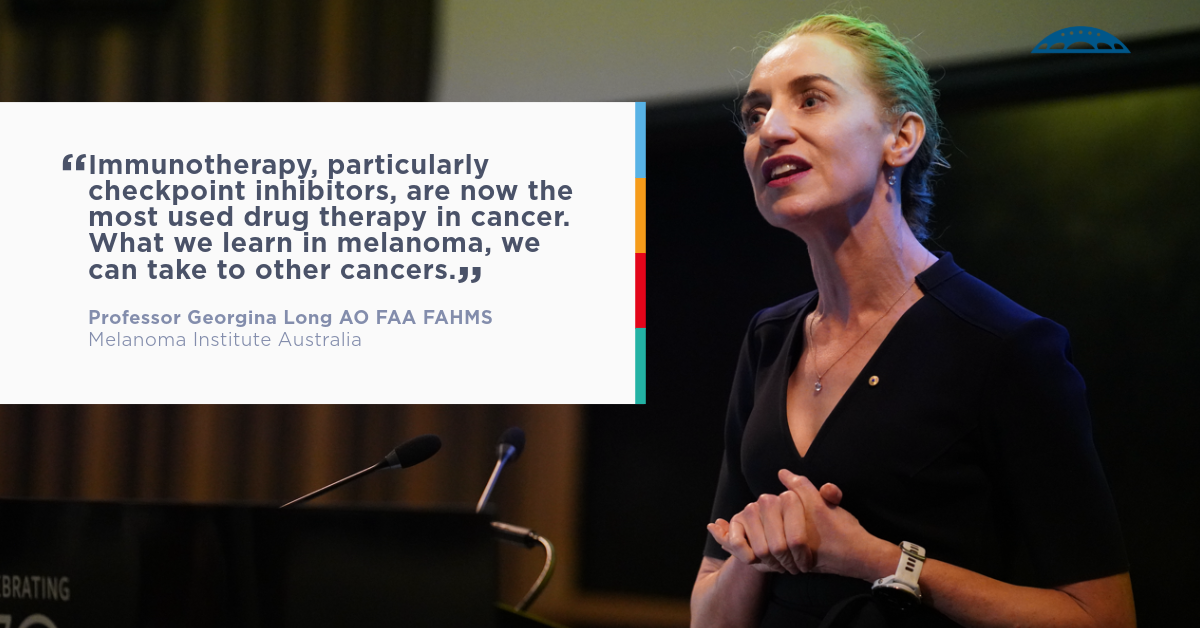
The oncologist and scientist has led clinical trials that revolutionised the way melanoma is treated worldwide and resulted in Australian Government funding of 10 new melanoma drugs that significantly increase survival.
But while survival rates have increased, Professor Long said the issue is still not solved: “Currently, where we are is probably equivalent to the 1960s and chemotherapy.”
The next Fellow, Professor Budiman Minasny FAA, shared that “When I was little, my mum always told me not to play on dirt, but I grew up studying soil science in Indonesia.”
While soil carbon sequestration is considered an economically viable method for mitigating climate change, he said soil science is much more than that.
“In order to tackle for example food security, water security, climate change, biodiversity and ecosystem security, we also need to tackle the soil itself.”
Professor Jose Polo FAA then shared his work exploring the boundaries of cellular reprogramming—including how he and colleagues have reconstructed reprogramming trajectories across different biological paradigms, including induced pluripotency, cancer and aging.
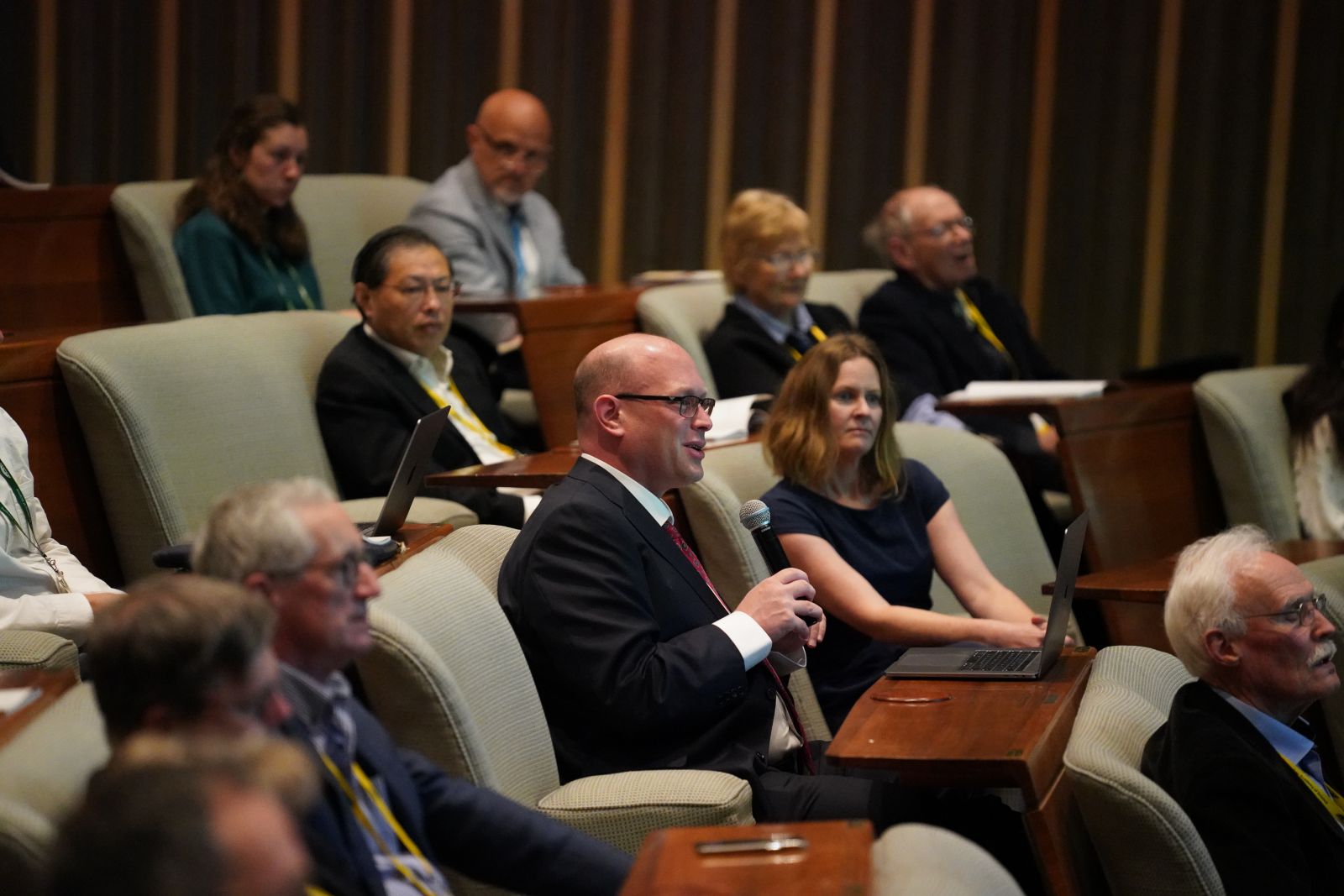
After a break for lunch, Professor Emma Johnston AO FAA FTSE, who was elected to the Academy in 2022, spoke.
An authority in marine science and conservation, Professor Johnston said the world is speeding up—and it's not just faster cars, faster drugs and faster communications.
“Natural ecosystems are also speeding up: metabolisms, evolution growth, life and death. And they are creating ecosystems we have not encountered before and not relied on before,” Professor Johnston said.
“The resulting dynamism requires us to shift our approach—our approach to research and science, our approach to conservation, and our approach to the way that we rely on ecosystems.” — Professor Emma Johnston.
Geophysicist Professor Hrvoje Tkalčić FAA then took us on a journey to the centre of the Earth—saying the inner core is really like a planet within our planet.
His group’s achievements include confirming the core’s solidity and the existence of the innermost inner core, obtaining images of the thermal convection cell at its top, and discovering the shuffling nature of its rotation.
Next, Professor Gene Tyson FAA described how “We are living in a microbial world. Microorganisms are the largest biomass on Earth ... but our understanding of these organisms has been limited.”
His achievements include demonstrating for the first time that metagenomic data could be used to reconstruct genomes directly from environmental samples, and helping to pioneer meta-omic approaches to better understand complex microbial communities.
These tools have been used to examine diverse microbial communities, from the corals on the Great Barrier Reef to the microbes responsible for the breakdown of permafrost in northern Sweden.
The next speaker, Professor Madeleine van Oppen FAA, shared some of her research involving microbial synthesis and climate adaptation of reef corals.
Massive congratulations to @spectacularia as one of the 2024 elected Australian Academy of Science Fellows party face emoji heart emoji I am so privileged to have you as my mentor for > 9 years! https://t.co/ZxTkaWtN2h
— Wing Y Chan (@wing_coral) September 10, 2024
Professor Lianzhou Wang FAA then described how material innovation has been the cornerstone of human civilisation—supporting us throughout the Stone Age and into the Quantum Era—and shared his team’s research journey to develop new semiconductor materials.
Corresponding Member Professor Eric Warrant FAA was then welcomed to the stage, where he greeted his family who were watching the livestream from their home in Sweden.
His research has furthered our understanding of the highly sensitive eye designs and visual neural circuitry that allows creatures to see in the dark.
“By teaching the [elephant hawkmoth] to associate colours with food, we were able to determine that they could see colour at light levels where our colour visual was completely gone,” he said.
“This was the first animal to be shown to have nocturnal colour vision.”
The discoveries his team has made in insects have been employed by the company Toyota to optimise cameras they hope will help drivers identify obstacles.
Speaking next, Professor Willy Zwaenepoel FAA FTSE described himself as “an accidental scientist”.
“I grew up in a small town in Belgium. My brother and I were first generation high school graduates, let alone university students, and I was studying electrical engineering because I thought I could get a job that way.”
He worked ended up in the ever-changing world of software systems, with achievements including ‘distributed shared memory,’ “which makes programming them much simpler,” he said.
The final event of Wednesday evening was the Gala Dinner at the National Arboretum, where the Academy’s most prestigious medals for 2023 and 2024 were presented. Read the President’s Gala Dinner speech.
Watch all new Fellows’ videos on their Academy profile pages.
On the second day of Science at the Shine Dome, out of the frosty Canberra morning, came 'the batman'.
Continuing the presentations by Fellows elected in 2023, Corresponding Member Professor Linfa Wang FAA FTSE shared with the assembled crowd the lessons we can learn from bats—beyond viruses and pandemics.
Professor Wang began by thanking Professor Peter Doherty AC FAA FAHMS FRS as his nominator to the Academy Fellowship.
“To have a Nobel laureate believe in your science and support your science for the last two decades—it’s really a privilege,” Professor Wang said.
He also noted the significance of today’s date, having started his career researching bat-borne viruses exactly 30 years ago, on 10 September 1994.
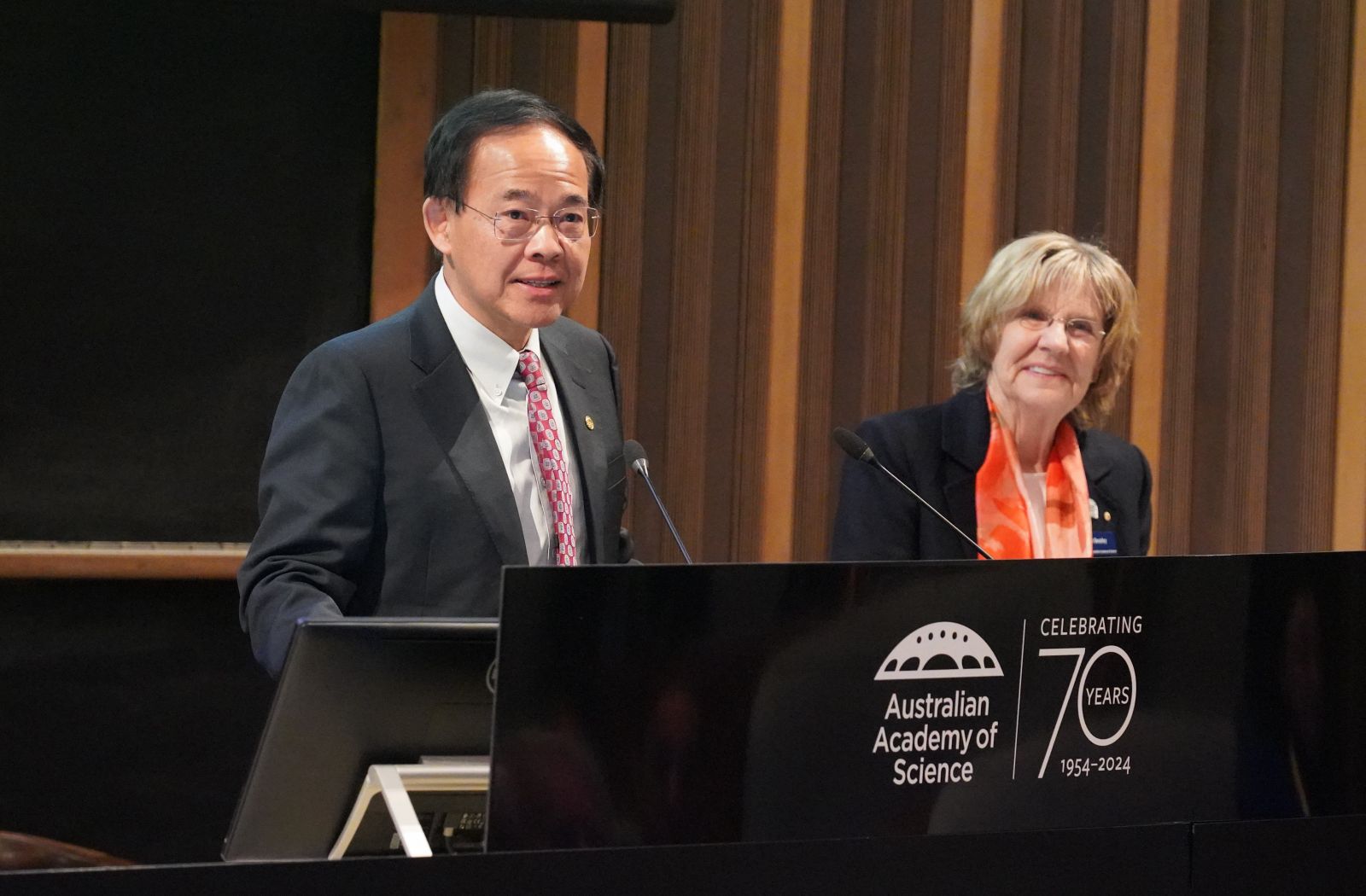
In the decades since that first day, Professor Wang went on to study the Hendra and Nipah viruses, and the viruses associated with SARS, MERS, Ebola and Covid-19.
Something he said he found particularly fascinating about bats is their ability to remain healthy throughout their extraordinarily long lifespans—including their resistance to cancer, and how they carry viruses without succumbing to disease.
The working theory is that these features are an evolutionary byproduct from having to cope with the stress exerted on their bodies when they fly.
“So on one hand, they have elevated defence genes ... [and] they have many mechanisms to damper the over-reaction, or over-immune response.”
These findings have seen much of his research focus expand beyond infectious disease—to see what bats can teach us about metabolism, DNA damage responses, senescence, inflammation and heat shock.
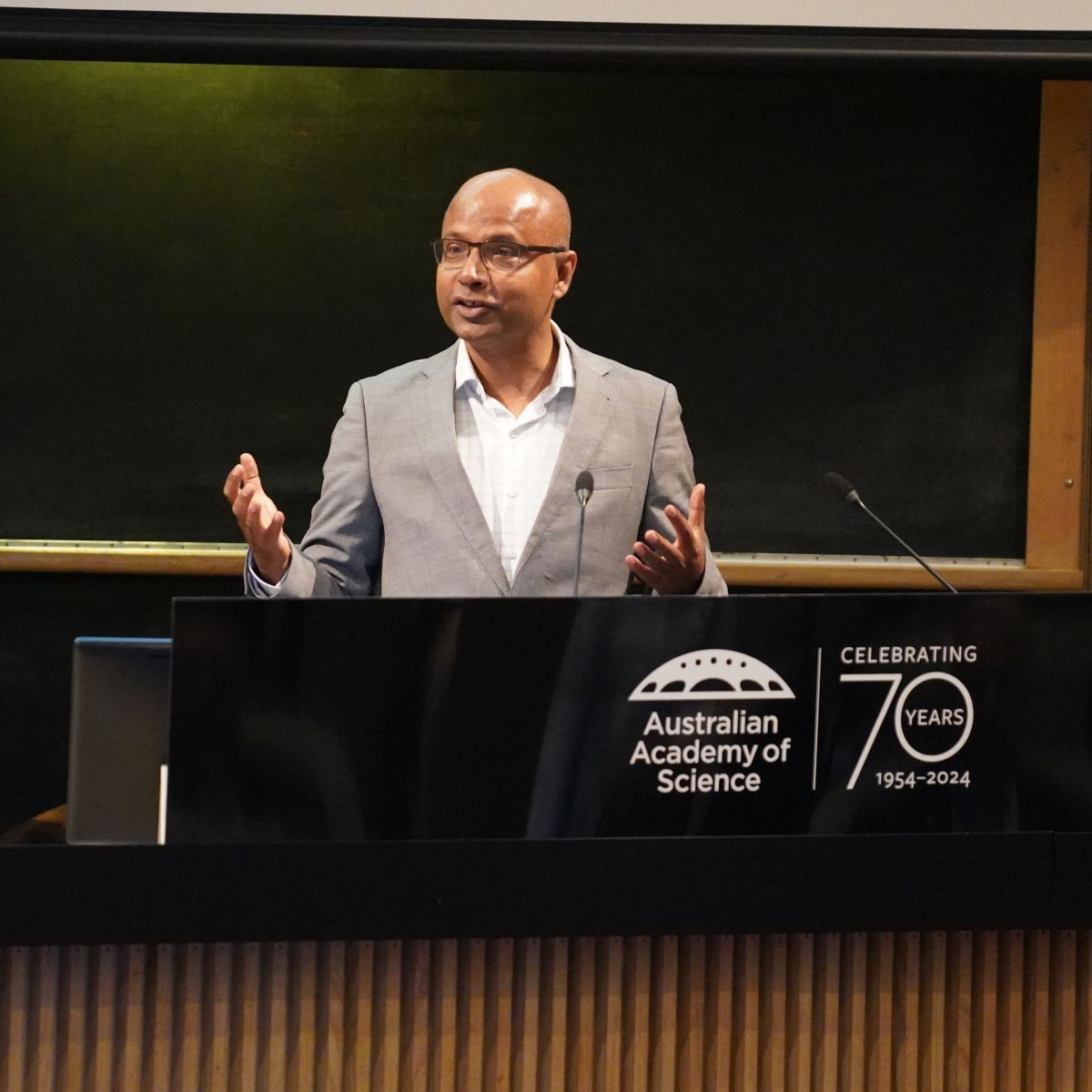
Before morning tea, other Fellows elected in 2023 took us on a journey from the skies to the soil—covering drug discovery inspired by natural products, electrocatalysis for energy conversion, and plant vascular systems.
One Fellow, Professor Brajesh Singh FAA, explained how healthy soil is crucial for healthy societies, noting almost every United Nations’ Sustainable Development Goal is dependent on having healthy soils.
Not only do most beneficial pathogens in our bodies—from our gut to our skin—have their origins in the soil, its health is also crucial for the majority of our food and compounds used in medicines, he said.
“The majority of global biodiversity lives in the soil and that’s why their activities are crucial. No terrestrial life is possible without healthy and functioning soil biodiversity,” Professor Singh said.
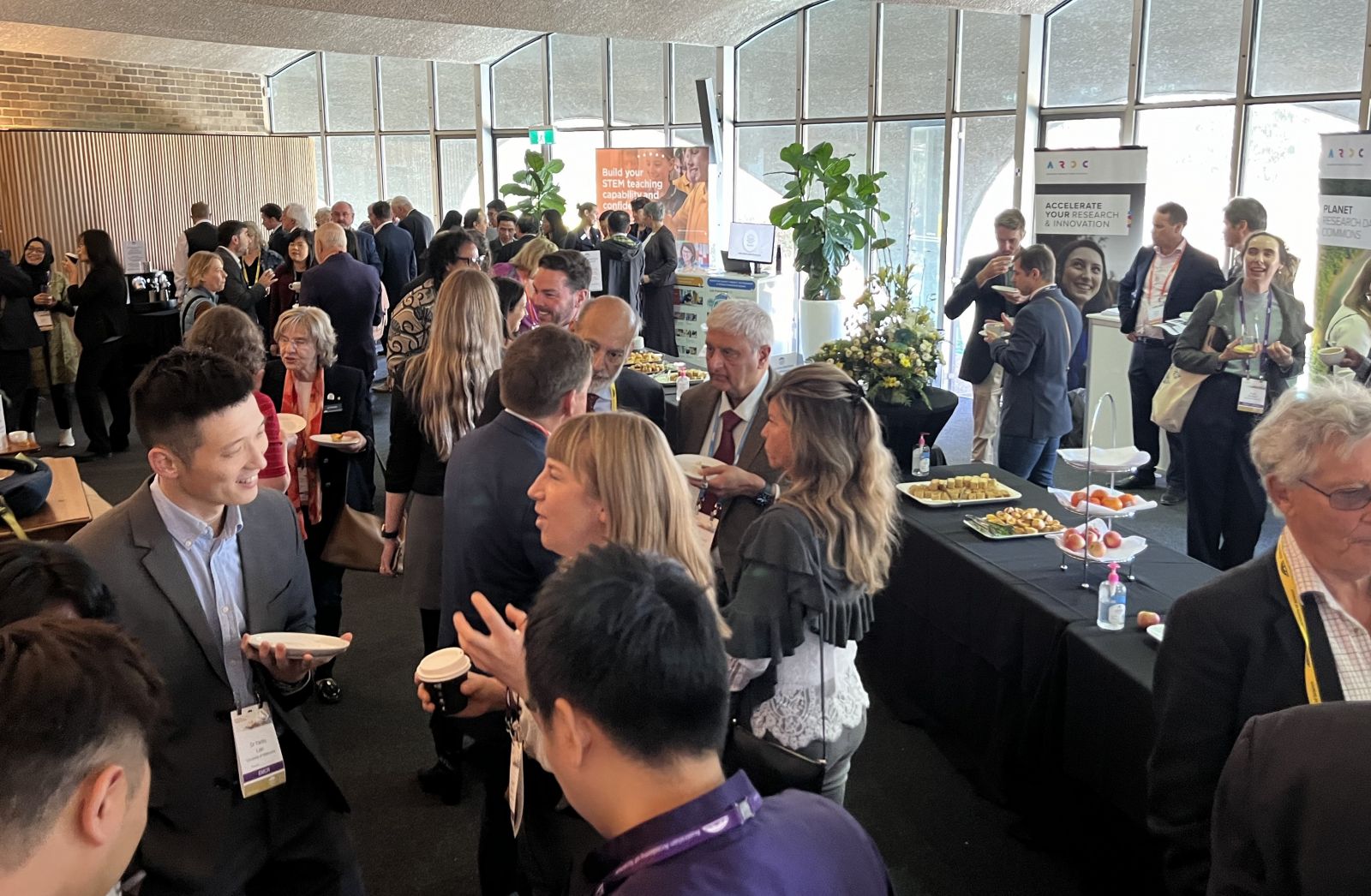
Professor Leslie Weston FAA also shared her research into how invasive plants step up to the challenge of changing climatic conditions.
Early in her career, Professor Weston said she was told it was important to ‘know your enemy’ to succeed in crop and landscape protection.
She went on to thoroughly investigate some of the threats to Australia’s native flora and fauna—studying the emergence, identification and invasion history of invasive pests, including prickly paddy melon, citron melon, panic grass and Paterson’s curse.
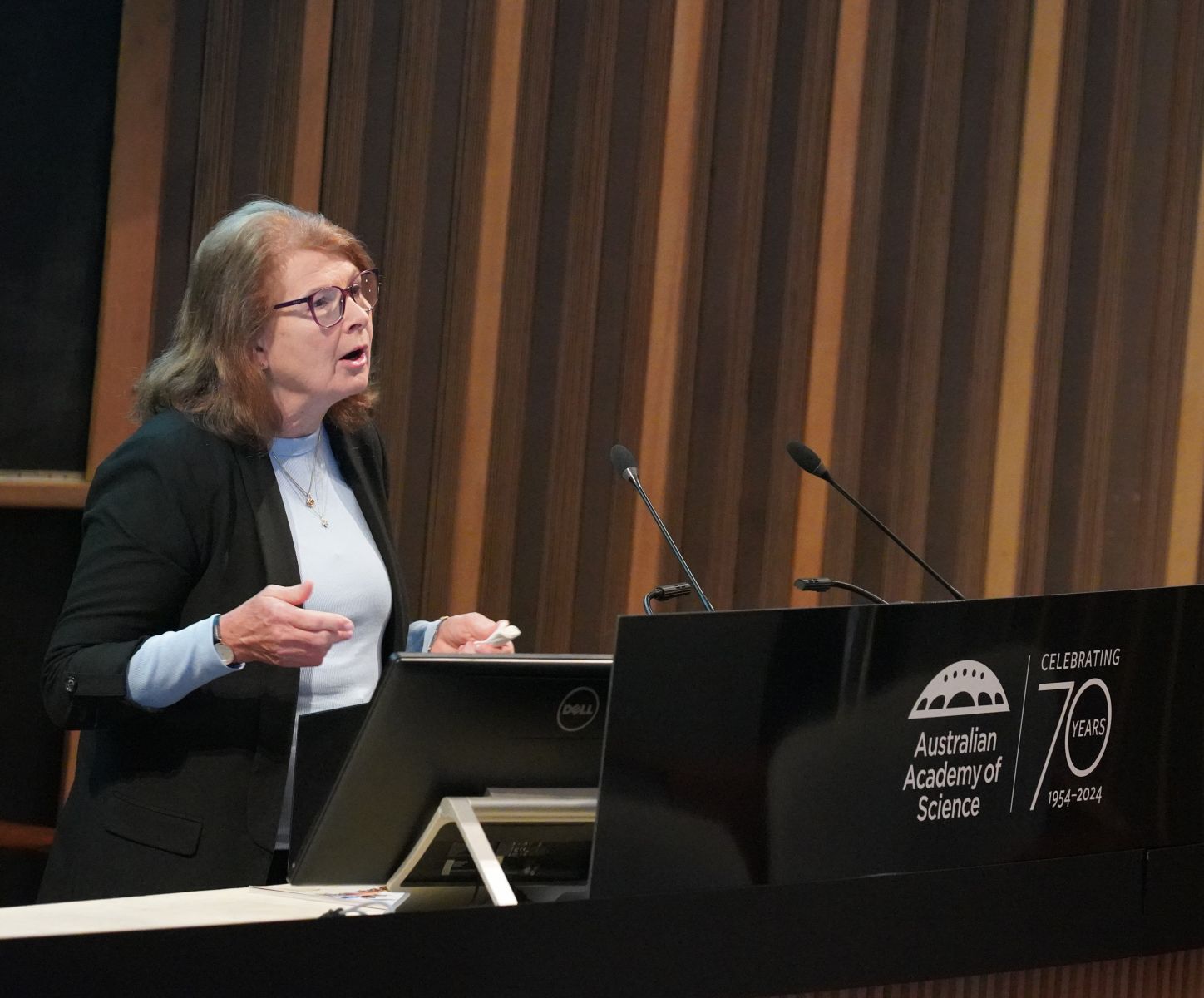
This has included studying the evolution of weapons they develop to protect themselves against predators.
After developing a number of molecular approaches to study these plants, Professor Weston and colleagues discovered a novel group of chemicals in the roots of Paterson’s curse that protect it against bacteria, fungi and other plants, along with at least 20 different alkaloids that accumulate in the leaves, flowers and stems, and are toxic to grazing livestock.
She stressed the importance of using genomics to understand these invasive weeds, noting only around 30 of these invasive plant genomes have been sequenced to-date.
“This emerging technology should help us study the reasons why these plants are so environmentally important and have adapted to our climatic conditions across the globe,” Professor Weston said.
⏰ 1.30PM AEST Our newly elected Fellows are being admitted to the Academy. Each of their personalised videos will be shown as they sign the historic Charter Book in our 70th anniversary year. Did you know that HRH Prince Philip was present at the Shine Dome when Her Majesty the… pic.twitter.com/uZKSPgnqVy
— Australian Academy of Science (@Science_Academy) September 10, 2024
Watch all new Fellows’ videos on their Academy profile pages.
Fellows elected in 2024 were invited to add their signatures to the Charter Book:
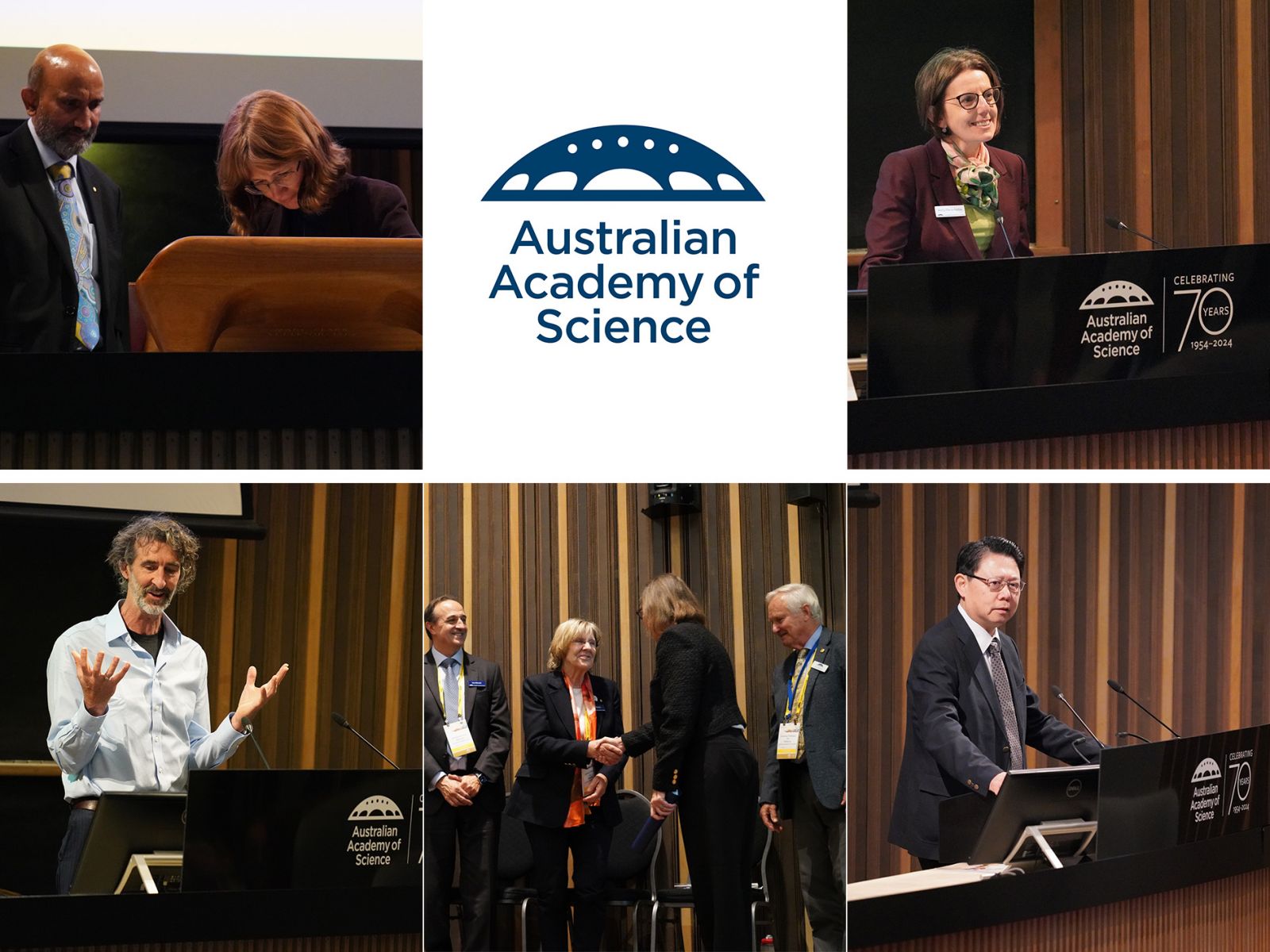
Fellows who had not yet signed the Charter Book also had the chance to do so:
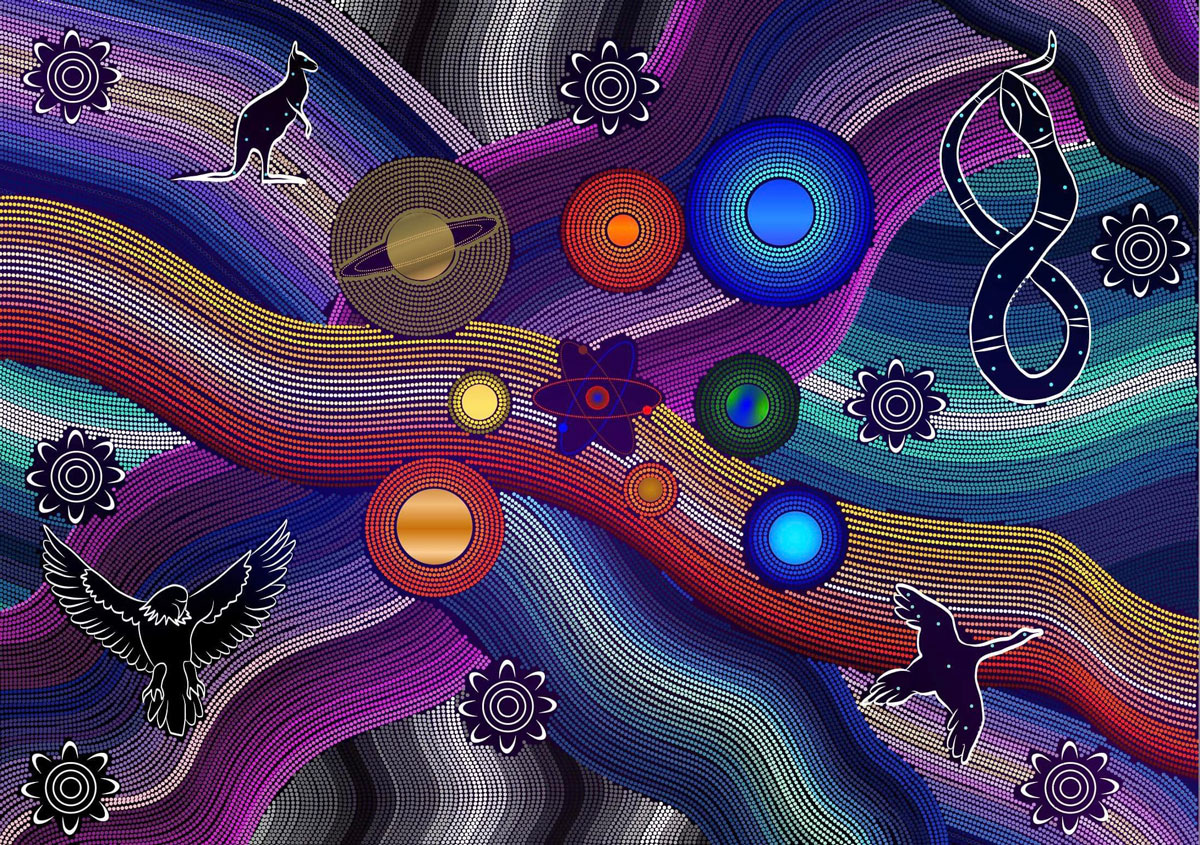
Professor Chennupati Jagadish AC PresAA FREng FTSE delivered the President’s address, which included welcoming the newest additions to the Academy Fellowship.
“I spend much of my time looking at nanostructures and observing the world at a different scale,” Professor Jagadish said.
“So, the opportunity to sit in this grand hall and hear about the wonders of our universe, how viruses multiply, novel ways to create clean energy, and the complexity and importance of the soil beneath our feet, is truly mind blowing.”
Professor Jagadish then moved to launch the Academy’s Innovate Reconciliation Action Plan (RAP).
RAP Working Group Member and Academy Fellow John Patrick FAA was invited to speak, where he noted that “Reconciliation is everyone’s business,” and stressed the importance of both informed cultural awareness and capability, and the need for people to change the status quo.
This flowed into an on-stage discussion with Bidjara descendant Ms Michelle Hobbs, from Griffith University, and Birri Gubba man Dr Jordan Pitt, from the University of Sydney.
Kamilaroi Water Scientist, Professor Bradley Moggridge from the University of Technology Sydney, joined via video link.
They touched on the importance of having role models and good mentors.
Ms Hobbs, who received the Aboriginal and Torres Strait Islander Scientist Award in 2023, said she chose to pursue ecology partly because of her natural fascination with plants and animals after growing up on a farm, combined with having wonderful role models.
“I saw my dad go on a journey from being a farmer to being a mature-age student at university and becoming an academic for a career, quite late in life,” Ms Hobbs said.
“Also, I had amazing female science teachers at school who encouraged me so having those role models made me able to see myself in those positions. However, I never had Indigenous role models in science and so for a long time it was quite difficult to picture myself being not just a woman scientist but an Indigenous scientist.
“I’m very fortunate to have had mentors and people encouraging me along the way, including Brad, who’s here today, smoothing the way for me and encouraging me, including to apply for the award that I won a couple of years ago.”
See our progress towards reconciliation.
The first day of Science at the Shine Dome saw around 180 people gathering to witness 20 leading scientists being formally admitted to the Academy.
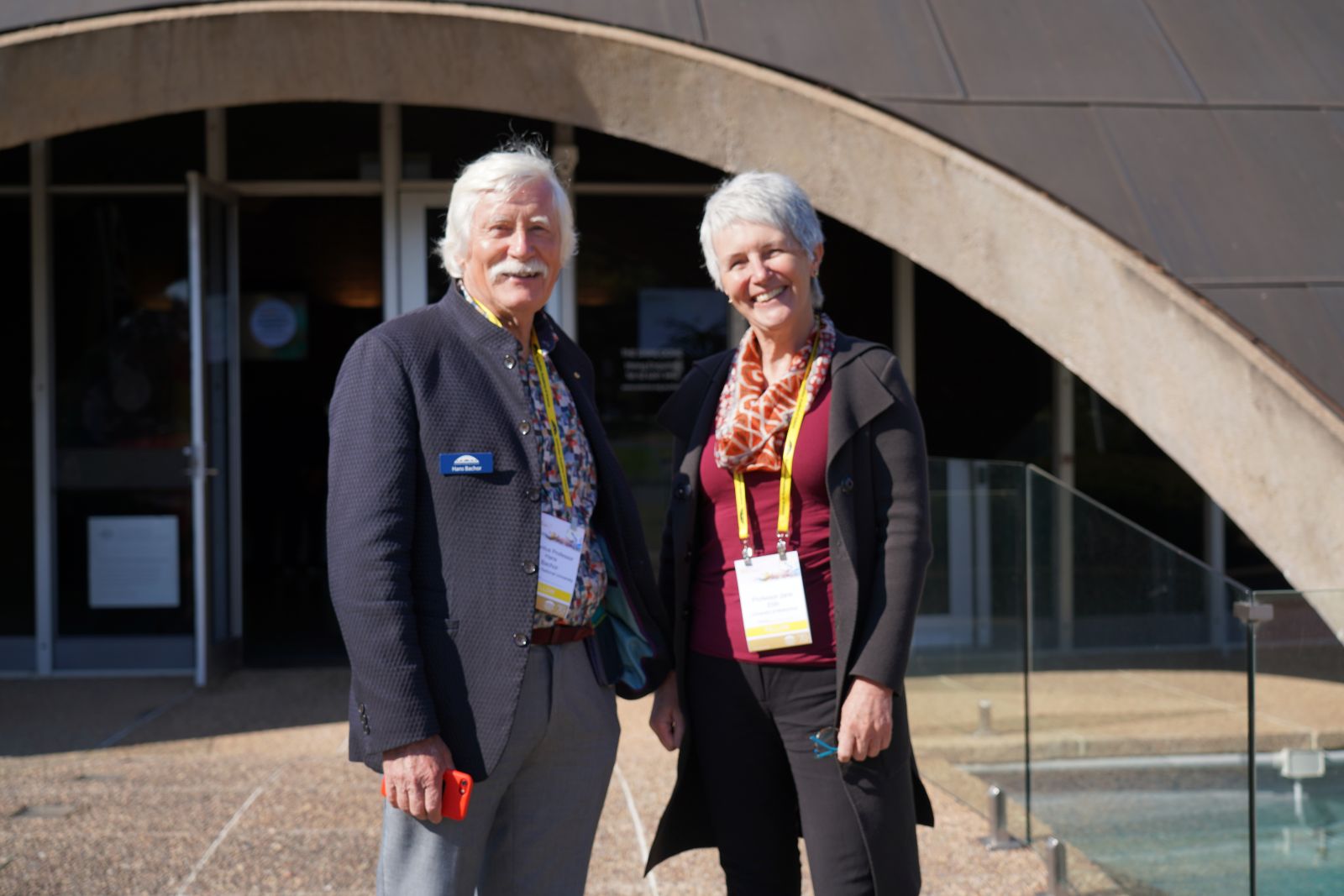
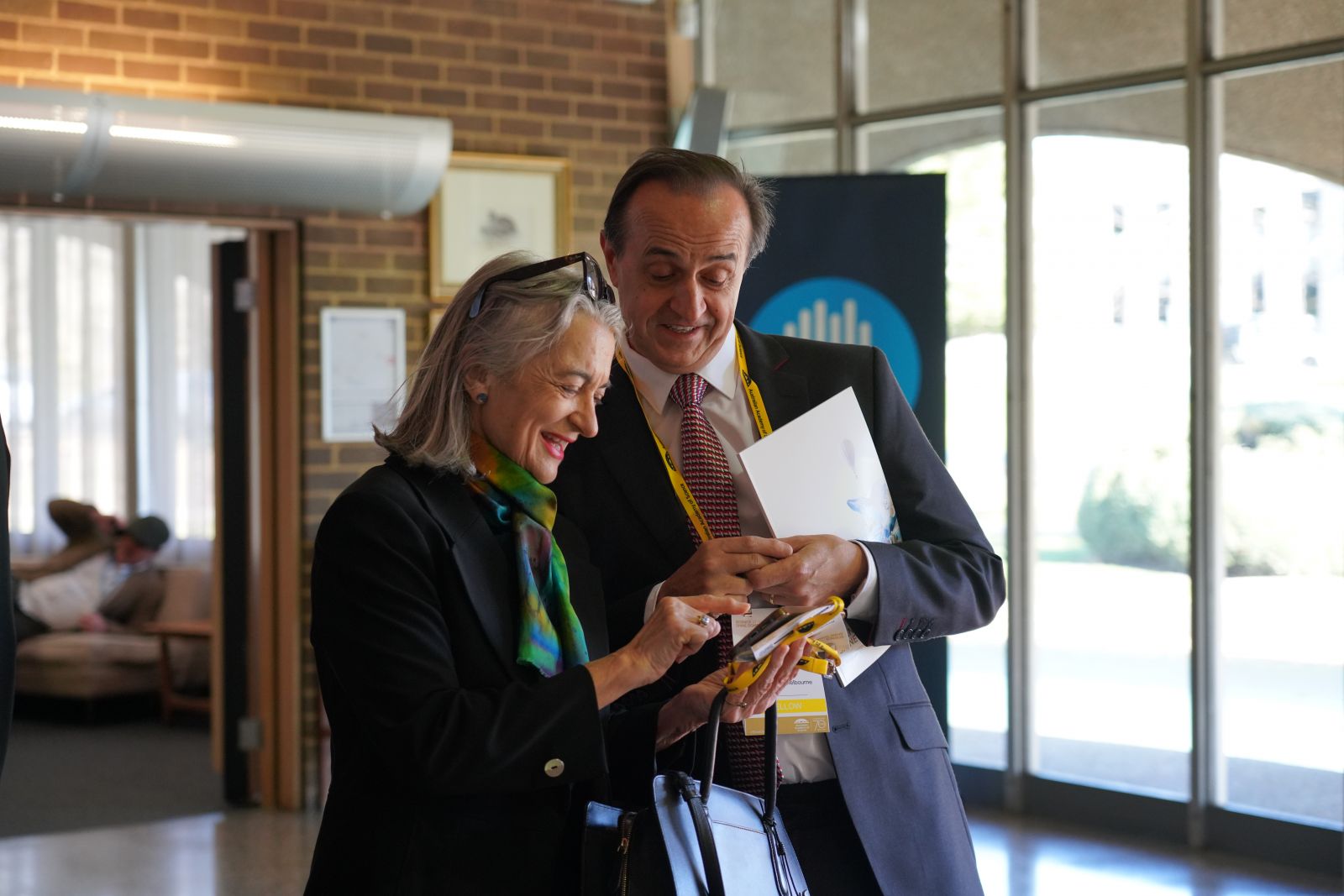
The event was opened with a Welcome to Country by Ngunnawal Elder Aunty Violet Sheridan.
This was followed by a welcome speech by Academy President Professor Chennupati Jagadish AC PresAA FREng FTSE.
“The Academy is proud to bring science to the service of the nation, and to have made substantial contributions to shaping Australian and global science over our 70-year history,” Professor Jagadish said.
He noted that Australia has a deep reservoir of talent in the sciences, including some of the world's most eminent researchers, as he welcomed the 2023 Fellows.
“Each Fellow is nominated by their peers and chosen through a rigorous election process,” Professor Jagadish said.
“Today, you join our Fellowship, who are collectively the brains trust of the nation—a true national treasure.”
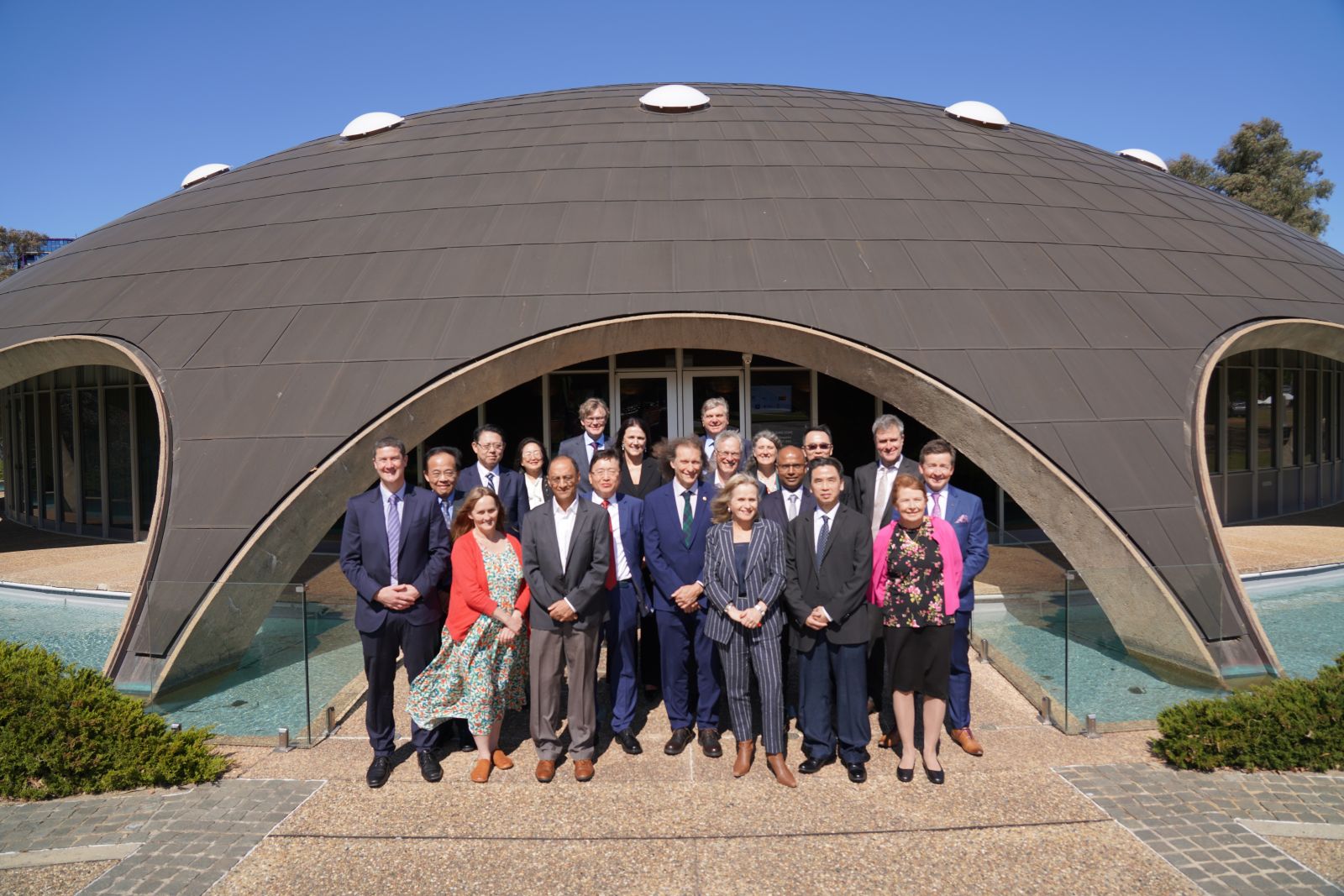
On Monday, the Academy formally welcomed to the Fellowship:
These Fellows have all made significant achievements in diverse fields—from delivering a novel antibiotic to combat life-threatening superbugs, designing stretchable liquids used on the International Space Station, and battling invasive species.
A video was shown for each new Fellow to as an introduction to their research.
Watch all new Fellows’ videos on their Academy profile pages.
During the day, the 2023 Fellows signed the Charter Book, signifying their formal admission to the Australian Academy of Science.
Their signatures join those of every Fellow of the Academy throughout the past 70 years, including some of the world's most esteemed scientists.
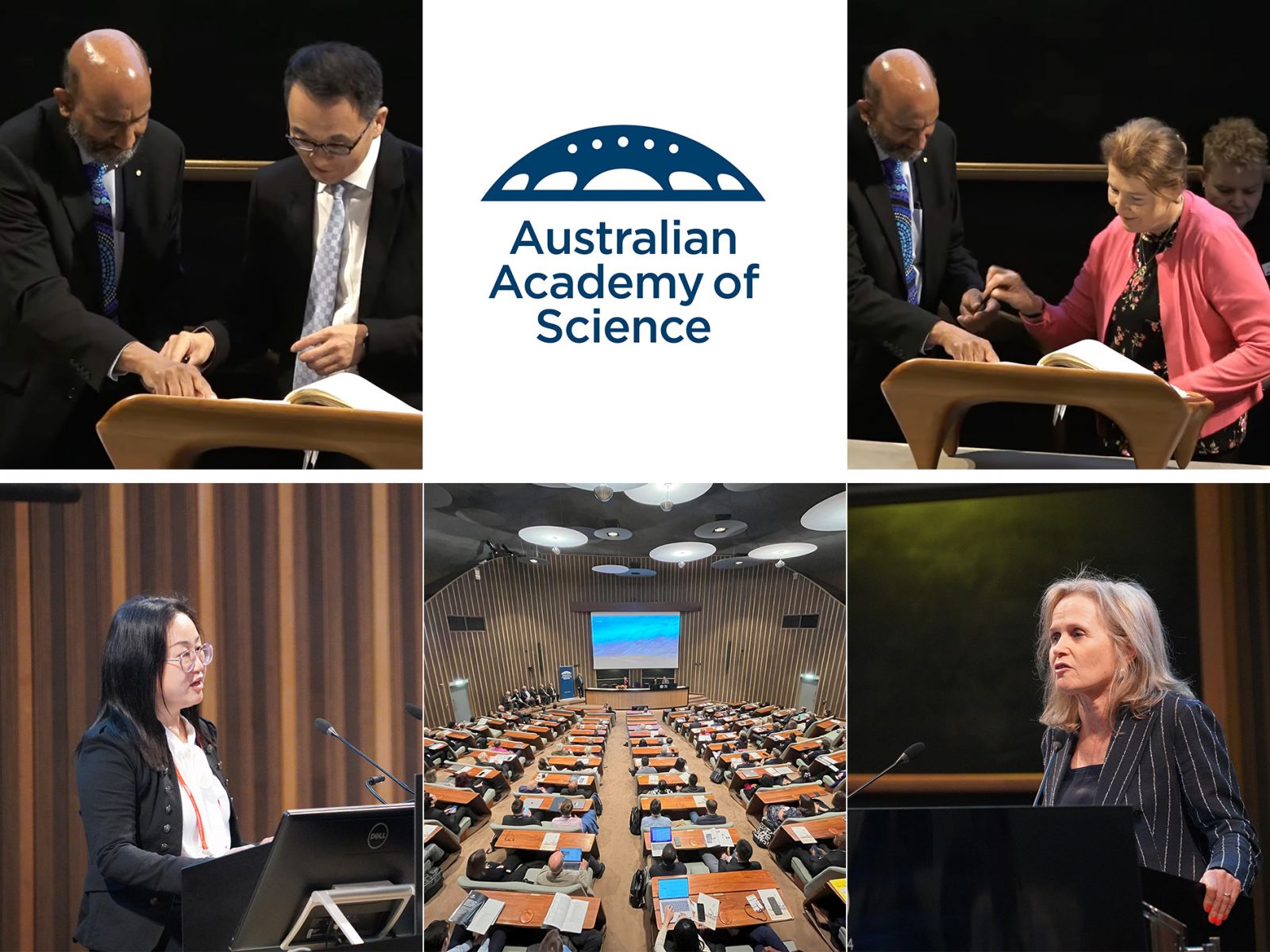
The 2023 Fellows each had a chance to give 10-minute presentations on their work, followed by a Q&A with the audience.
Professor Andrew Wilks noted the personal significance of the occasion at the beginning of his presentation.
“I had the great fortune to look at the charter book before and see some of the names of my mentors and heroes,” he said.
Professor Wilks added that earlier that day, he also met two scientists who had had great impacts on his career—while in the queue for the gelato cart hired for the event.
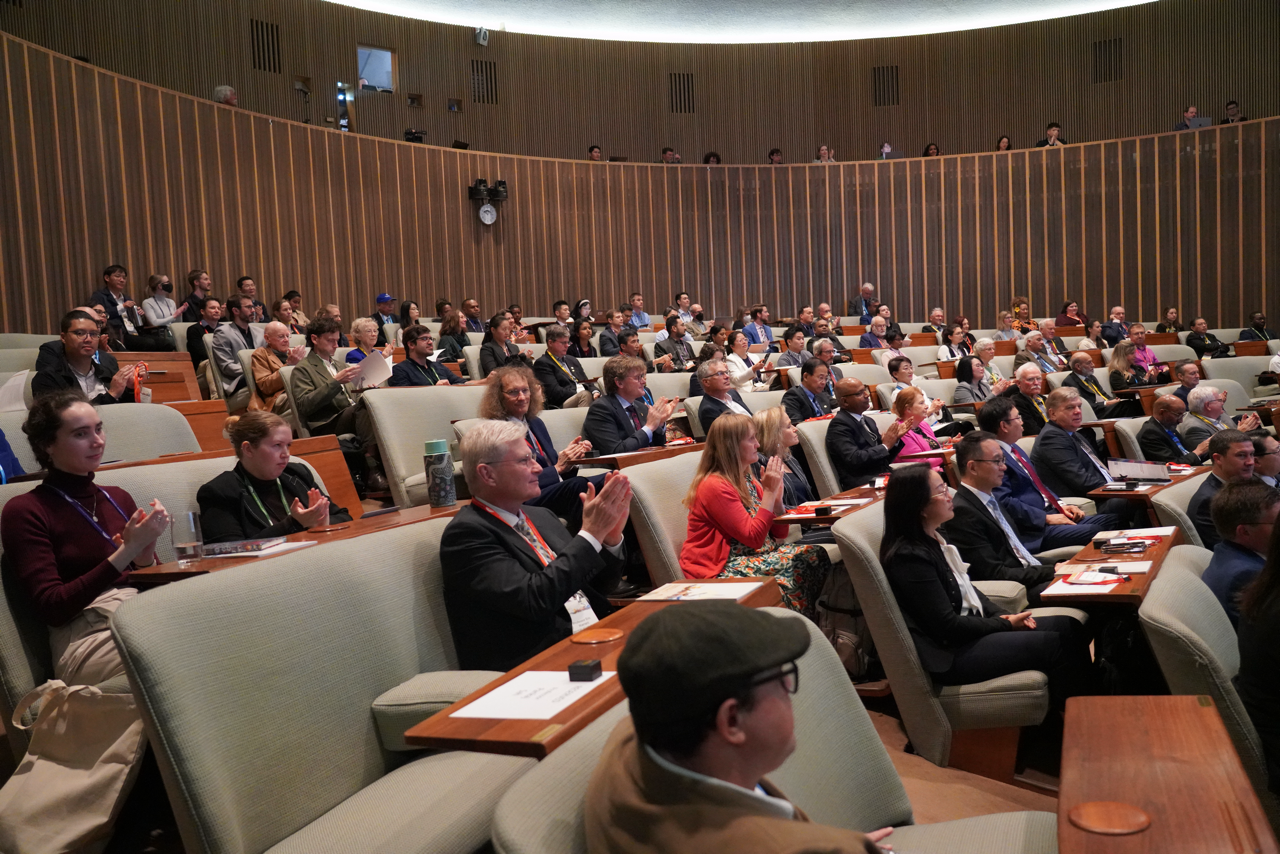
Attendees, Fellows and other scientists continued the conversation online.
Do yourself a favor & watch all these videos. Beautifully done, they tell inspirational stories of the very best of science & scientists in an accessible way. Although they will barely make the news, these quiet superstars confront the most important, troubling & desperately… https://t.co/8LyrWzIOuV
— Prof Brendan Crabb (@CrabbBrendan) September 9, 2024
Monday also marked the first meeting of the Asia-Pacific Academic Mentoring Program, which connects early-career researchers with senior science mentors to guide young scientists from developing nations within the region to become future leaders in academia.
Speaking to the participants, Professor Jagadish emphasised the importance of more senior scientists guiding those who come after them,
“If it were not for my mentors, I would not be here today,” he said.
More than 100 early- and mid-career researchers (EMCRs) from across Australia registered to attend Science at the Shine Dome 2024, with an EMCR networking function being held Monday night on the grounds of Ian Potter House.
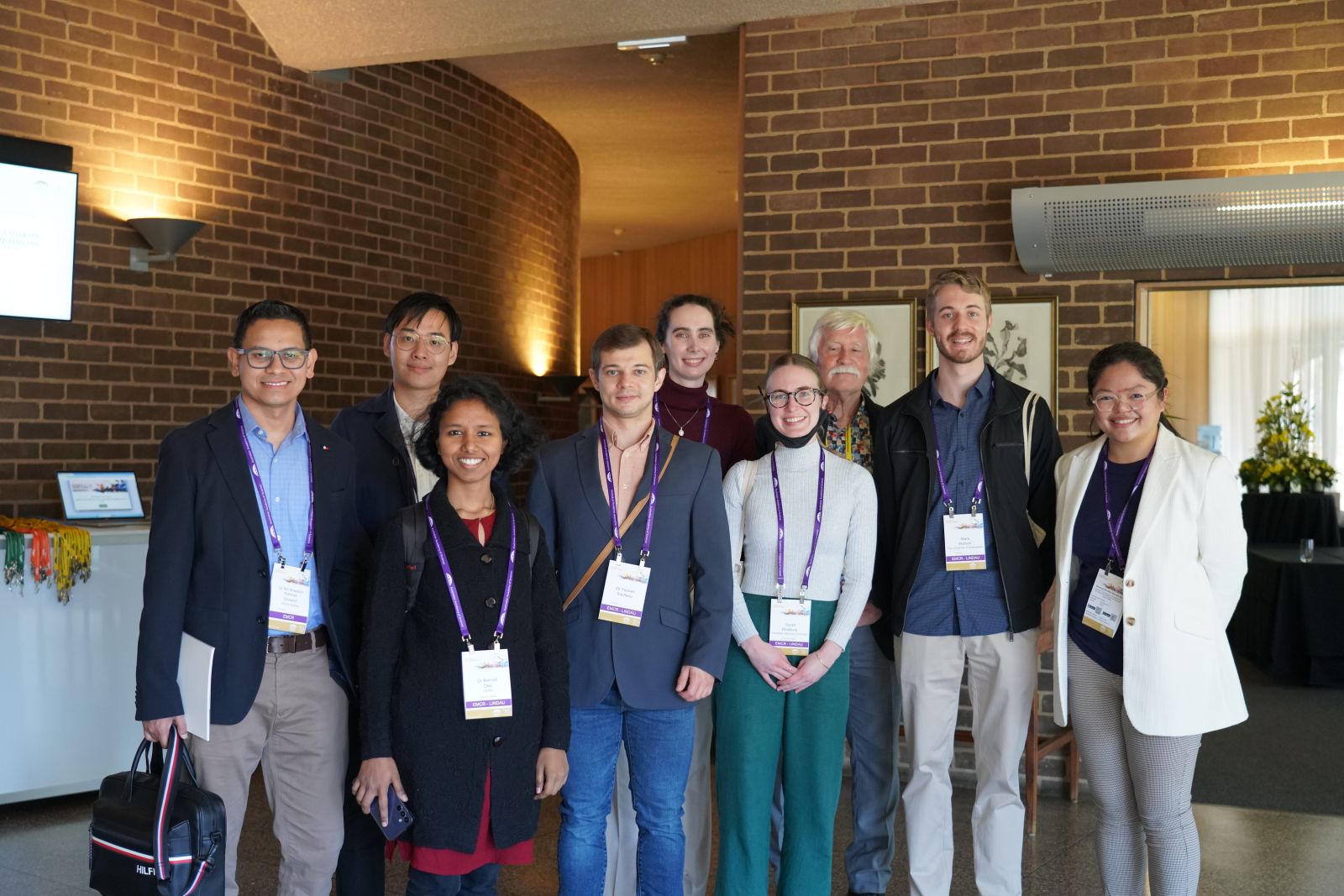
© 2025 Australian Academy of Science